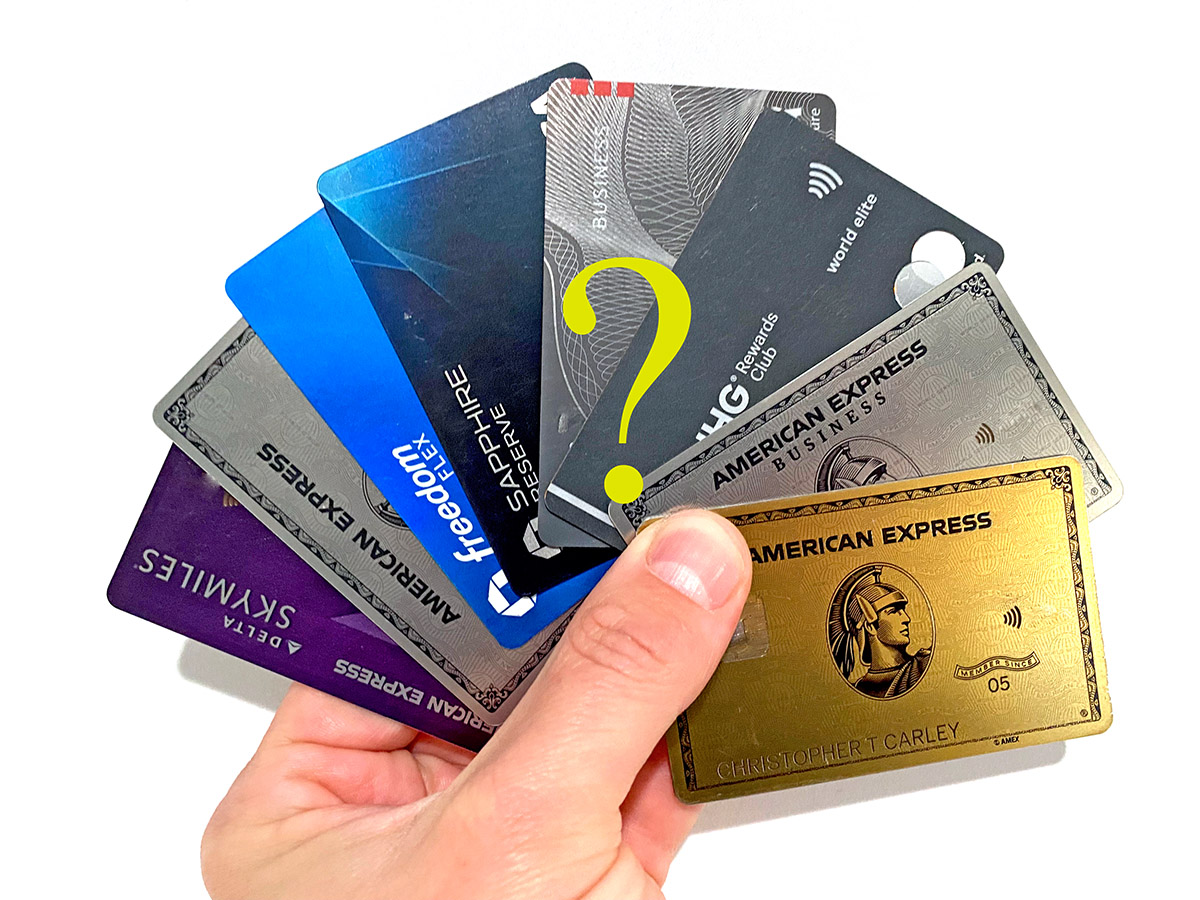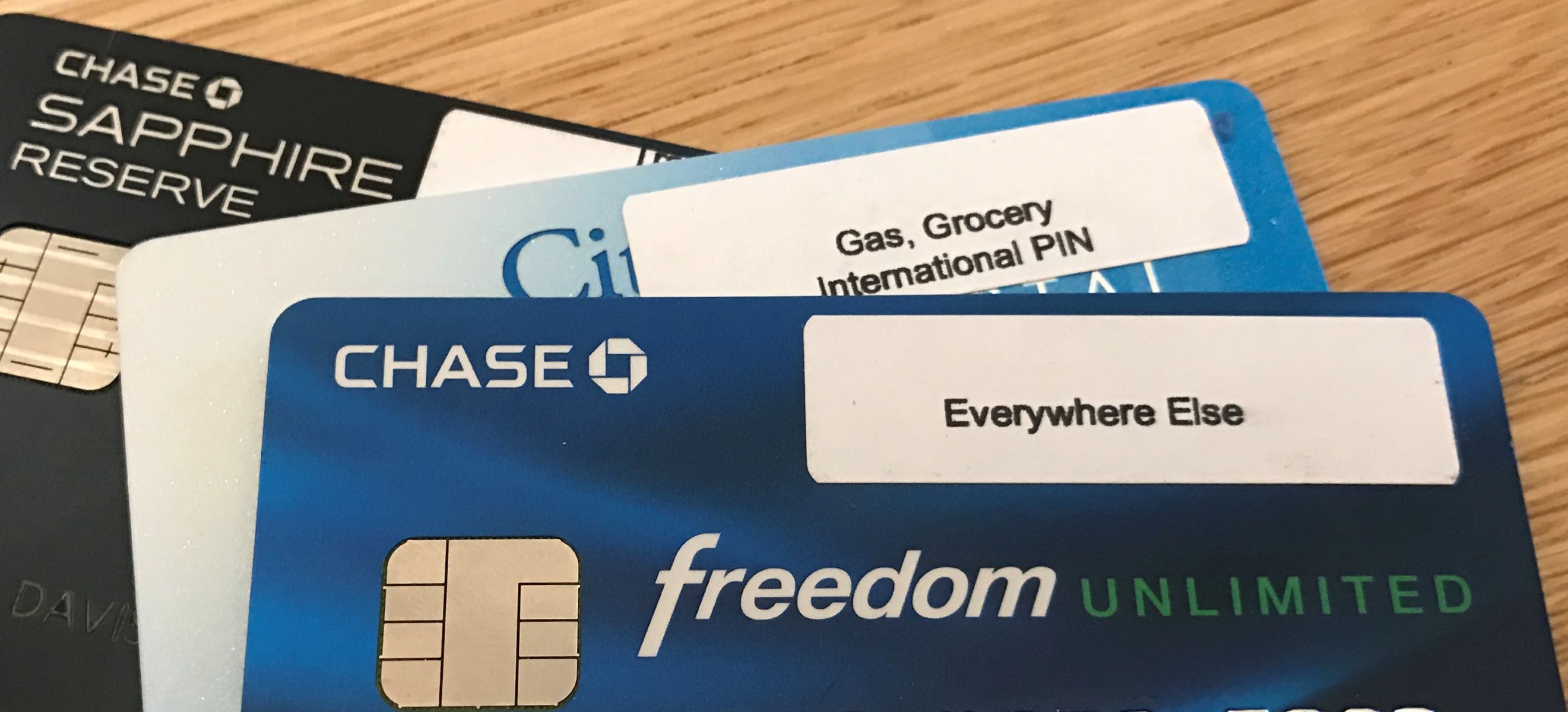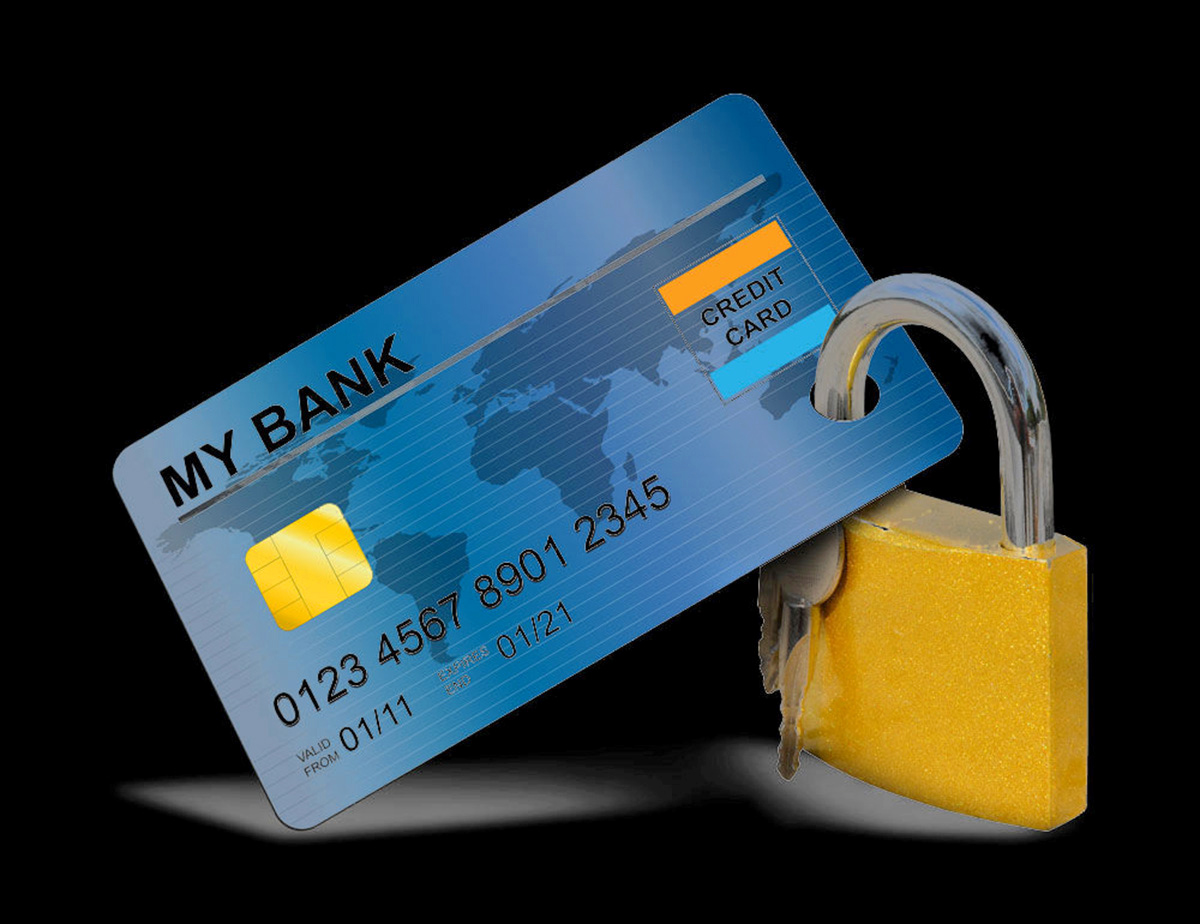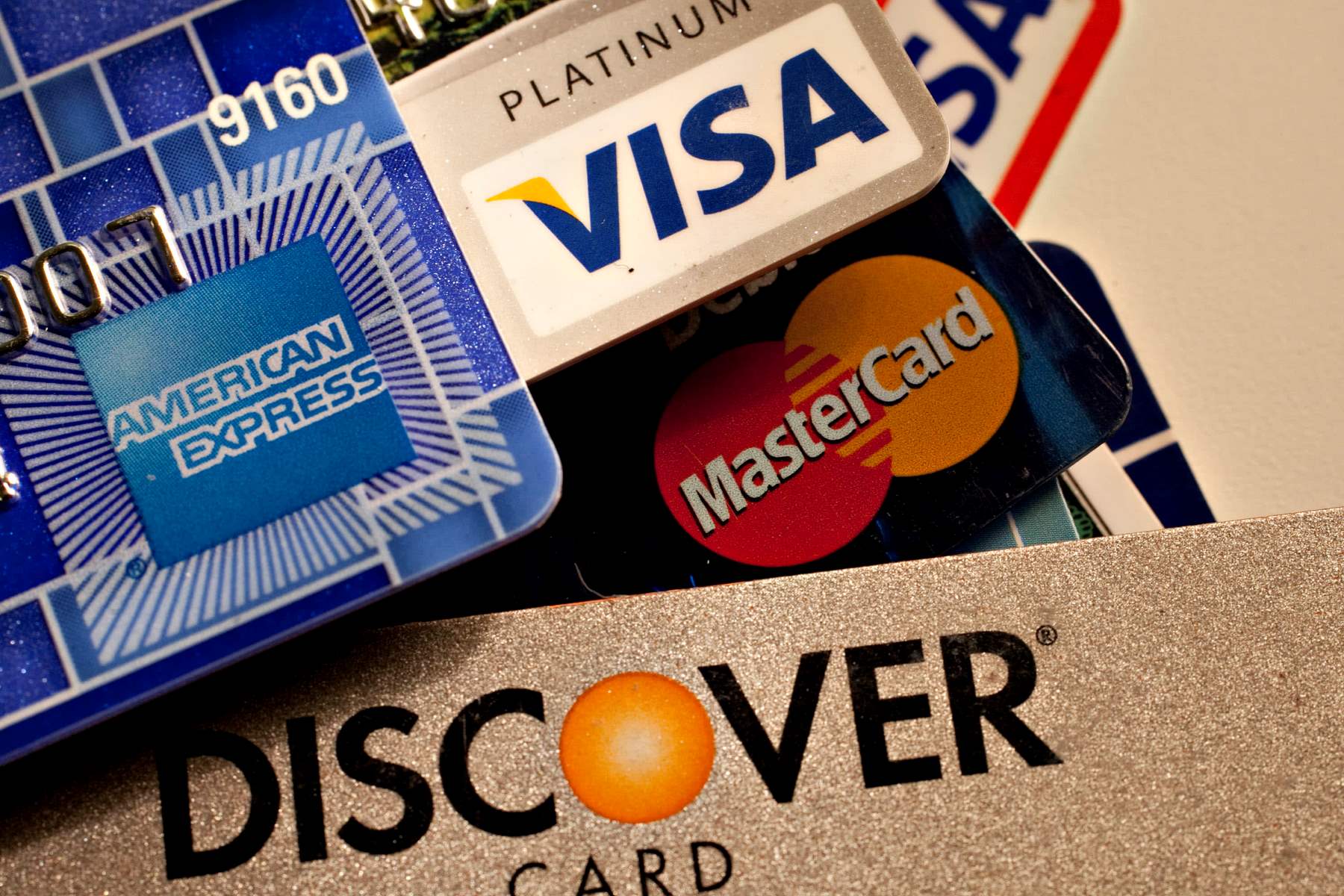

Finance
What Is A CSC On A Credit Card
Published: November 4, 2023
Find out what a CSC on a credit card is and how it relates to your finance. Learn about this important security feature to protect your financial transactions.
(Many of the links in this article redirect to a specific reviewed product. Your purchase of these products through affiliate links helps to generate commission for LiveWell, at no extra cost. Learn more)
Table of Contents
Introduction
Credit cards have become an integral part of our daily lives, offering convenience and financial flexibility. With the rise of online shopping and electronic transactions, ensuring the security of these transactions has become paramount. One such security feature found on credit cards is the Card Security Code (CSC), also known as the Card Verification Value (CVV) or the Card Identification Number (CID).
The CSC is a three or four-digit number typically found on the back of a credit card, in the signature panel. Its purpose is to provide an additional layer of security and verify the legitimacy of a transaction, particularly for online purchases where the cardholder may not be physically present.
In this article, we will explore the definition, function, and importance of CSC on a credit card, as well as how to locate it on different types of credit cards. We will also address common misconceptions and frequently asked questions about CSC to provide a comprehensive understanding of this security feature.
Understanding the role of CSC on a credit card is crucial for both cardholders and merchants to ensure secure and safe transactions. So let’s dive in and unravel the mysteries behind this small but significant security code.
Definition of CSC on a Credit Card
The Card Security Code (CSC), also referred to as the Card Verification Value (CVV) or the Card Identification Number (CID), is a unique three or four-digit code found on credit cards. It serves as an additional security measure to enhance the authentication process during transactions.
The specific location of the CSC depends on the type of credit card. For Visa, Mastercard, and Discover, the CSC is usually printed on the back of the card, in the signature panel, following the cardholder’s account number. On the other hand, American Express cards have a four-digit CSC printed on the front, above and to the right of the card number.
The CSC is not embossed on the card and is typically printed in a different color, making it harder to photocopy or replicate. This adds an extra layer of security, as the CSC is not stored in the card’s magnetic stripe or chip.
The primary purpose of the CSC is to deter fraudulent activities by confirming that the person making the transaction is in possession of the physical credit card. By requiring the input of the CSC, merchants can verify that the customer has the card in their possession at the time of purchase.
It is important to note that the CSC is not the same as the PIN (Personal Identification Number). The CSC is used for online and card-not-present transactions, while the PIN is used for in-person transactions at point-of-sale terminals or ATMs. The PIN provides an additional layer of security by requiring the cardholder to enter a unique code that is known only to them.
Next, we will explore the purpose and function of the CSC on a credit card to understand why it is a crucial security feature for online transactions.
Purpose and Function of CSC
The Card Security Code (CSC) plays a vital role in the security of credit card transactions, especially those conducted online or over the phone. Its main purpose is to verify that the cardholder is in possession of the physical credit card during a transaction.
The CSC helps to prevent unauthorized use of credit card information by acting as an additional layer of authentication. Since the code is not stored on the magnetic stripe or chip of the card, it cannot be easily obtained through skimming or data breaches. This makes it more difficult for fraudsters to make fraudulent purchases with stolen credit card details.
When making an online or card-not-present transaction, the merchant typically requests the CSC along with the card number, expiration date, and cardholder’s name. The customer is required to enter the CSC into a secure form or provide it verbally during a phone transaction. By inputting the correct CSC, the customer confirms that they are the legitimate cardholder and have the physical card in their possession.
Merchants use the CSC to validate the transaction and reduce the risk of fraud. It acts as a verification tool, allowing merchants to determine if the transaction is legitimate before processing it. If the CSC is incorrect or missing, it may indicate that the customer does not have physical access to the card, raising suspicion of potential fraud.
In addition, the CSC provides an extra layer of security for both cardholders and merchants. It helps protect against unauthorized transactions and chargebacks, which can have significant financial consequences.
For customers, the CSC helps ensure the safety of their credit card information, reducing the risk of unauthorized charges. It adds peace of mind, knowing that their card details are being securely transmitted and verified during the transaction process.
For merchants, the CSC acts as a safeguard against fraudulent transactions. By requiring the CSC, merchants can verify the authenticity of the customer and reduce the likelihood of chargebacks or disputes related to unauthorized transactions.
Overall, the purpose and function of the CSC on a credit card are to provide an additional layer of security, authenticate the cardholder, and protect against fraud for online and card-not-present transactions.
Importance of CSC for Online Transactions
In today’s digital age, online transactions have become increasingly common and convenient. However, they also present certain risks, particularly in terms of security and fraud. This is where the Card Security Code (CSC) plays a crucial role in ensuring the safety and authenticity of online transactions.
One of the major benefits of the CSC is that it provides an additional layer of protection for cardholders when making online purchases. With the CSC, merchants can verify the legitimacy of the transaction, ensuring that the customer is the rightful owner of the credit card.
By requiring the CSC during online transactions, card issuers and merchants can minimize the risk of unauthorized use of credit card information. This helps protect cardholders from fraudulent activities such as identity theft and unauthorized purchases.
The importance of the CSC for online transactions also extends to merchants. By implementing the use of the CSC, merchants can reduce the likelihood of chargebacks and disputes related to fraudulent transactions. This can save businesses significant time, resources, and financial losses.
In addition, the CSC adds an extra layer of confidence for customers when shopping online. Knowing that their credit card information is being safeguarded by the CSC creates a sense of security and trust in the online shopping experience.
Furthermore, the CSC helps prevent the misuse of stolen credit card information. In cases where credit card details are obtained through data breaches or hacking incidents, the lack of the CSC makes it more difficult for fraudsters to make unauthorized purchases.
It is important for both cardholders and merchants to understand the importance of the CSC for online transactions. Cardholders should always ensure that they keep their CSC confidential and not share it with anyone. Merchants, on the other hand, should ensure that their payment gateways and systems are designed to securely collect and store CSC information.
With the increasing number of online transactions, the importance of the CSC cannot be overstated. It serves as a vital tool in protecting cardholders and businesses from online fraud and unauthorized transactions.
How to Locate the CSC on Different Types of Credit Cards
The location of the Card Security Code (CSC) on a credit card varies depending on the card issuer and type of card. To help you locate the CSC on different types of credit cards, we have provided a guide below:
Visa, Mastercard, and Discover: For most Visa, Mastercard, and Discover credit cards, the CSC is a three-digit number found on the back of the card in the signature panel. It is typically printed after the cardholder’s account number. Look for a series of three digits, usually separated by a space or a dash.
American Express: American Express (Amex) credit cards have a four-digit CSC, also known as the Card Identification Number (CID). Unlike other card types, the CSC is printed on the front of the card, above and to the right of the card number. It is typically located towards the right-hand side of the card.
Other Card Types: While Visa, Mastercard, Discover, and American Express are the most commonly used credit cards, there are other card types that may have slightly different CSC locations. It is best to consult the card issuer or refer to their guidelines for specific instructions on locating the CSC.
When using the CSC, it is important to note that it is not embossed on the card and may be of a different color or texture compared to the card’s background. This is done intentionally to make it harder to reproduce through simple photocopying or scanning.
Ensure that you do not confuse the CSC with other numbers on the card, such as the cardholder’s account number or the expiration date. The CSC is a separate three or four-digit code dedicated to security verification during transactions.
When entering the CSC during an online transaction, make sure to double-check that you have entered the correct code. Incorrectly entering the CSC may result in a transaction decline or an error, so it is crucial to take the time to enter it accurately.
Remember, the CSC is an essential security feature that helps protect your credit card information and ensures secure online transactions. Familiarizing yourself with its location on your specific credit card will enable you to confidently provide the necessary information when making purchases.
How CSC Differs from Other Security Features on Credit Cards
When it comes to protecting the security of credit cards, various security features are implemented to prevent fraud and unauthorized use. While the Card Security Code (CSC) is an important security feature, it is essential to understand how it differs from other security measures on credit cards.
Magnetic Stripe and Chip: The magnetic stripe and chip are the primary methods of storing and transmitting credit card information. They contain the cardholder’s account details necessary for processing transactions. However, the CSC is not stored on the magnetic stripe or chip. Its purpose is to provide an additional layer of security and authentication beyond the physical card details.
Signature Panel: The signature panel on the back of a credit card is where the CSC is typically located for most card types. The signature panel is designed for the cardholder to sign as a form of verification. The CSC, printed within or near the signature panel, is a separate security code used to authenticate transactions, while the signature itself is primarily used for in-person point-of-sale transactions.
EMV Chip: The EMV chip, found on newer credit cards, is a microchip that stores encrypted data and provides enhanced security against counterfeiting. It generates unique transaction codes for each purchase, making it difficult for fraudsters to replicate the card’s information. While the chip enhances security during in-person transactions, the CSC is still required for online or card-not-present transactions to verify the cardholder’s possession of the physical card.
PIN (Personal Identification Number): The PIN is a numeric password used for in-person transactions at point-of-sale terminals or ATMs. It provides an additional layer of security by ensuring that only the authorized cardholder can proceed with a transaction. The PIN is different from the CSC, as it serves a different purpose and is used in different transaction scenarios. The PIN is not required for online transactions.
Tokenization: Tokenization is a security feature that replaces the cardholder’s sensitive information, such as the primary account number, with a unique identifier or “token.” This process helps protect the actual card details from being exposed during transactions. While tokenization enhances security, the CSC is still necessary as it verifies the legitimacy of the transaction and confirms the cardholder’s possession of the physical card.
The CSC differs from other security features on credit cards in its specific function and purpose. While the magnetic stripe, chip, signature panel, EMV chip, PIN, and tokenization all contribute to overall card security, the CSC is dedicated to verifying the cardholder’s possession of the physical card during online or card-not-present transactions.
Understanding the distinctions between these security features is crucial for both cardholders and merchants to ensure the appropriate use and protection of credit card information, reducing the risk of fraudulent activities and unauthorized transactions.
Common Misconceptions and FAQs about CSC
Despite the importance of the Card Security Code (CSC) on credit cards, there are some common misconceptions and frequently asked questions surrounding this security feature. Let’s address a few of them:
1. Is the CSC the same as the PIN?
No, the CSC is not the same as the Personal Identification Number (PIN). The CSC is used for online and card-not-present transactions, while the PIN is used for in-person transactions at point-of-sale terminals or ATMs. The PIN provides an additional layer of security by requiring the cardholder to enter a unique code that is known only to them.
2. Can I reuse the same CSC for multiple transactions?
No, the CSC is unique to each credit card and is not reusable. Every time you make a new online or card-not-present transaction, you will be required to provide the correct CSC. The CSC adds an extra layer of security by verifying that you have the physical card in your possession during each transaction.
3. Can someone steal my credit card information with just the CSC?
No, the CSC alone is not sufficient to initiate unauthorized transactions. While the CSC is a crucial security code, it is not enough for someone to make fraudulent purchases. Other card details, such as the card number, expiration date, and cardholder’s name, are also required to complete a transaction. It is important to keep all your credit card information secure and never share it with anyone.
4. Does the CSC change if I get a new credit card?
Yes, when you receive a new credit card, the CSC will change. Each credit card has a unique CSC tied to it, and when you get a new card, you will be issued a new CSC. It is important to update any saved payment information or recurring subscriptions with the new card details, including the updated CSC.
5. Can I find the CSC on my billing statement?
No, the CSC is not typically found on billing statements. It is a security code found physically on the credit card itself. The purpose of the CSC is to verify the cardholder’s possession of the physical card during a transaction.
6. What should I do if my CSC is illegible or worn off?
If the CSC on your credit card is illegible or no longer visible, it is important to contact your card issuer or bank. They can provide guidance on how to obtain a replacement card with a new CSC. It is crucial to ensure that the CSC is readable and intact to maintain the security of your credit card transactions.
These are just a few of the common misconceptions and frequently asked questions about the Card Security Code (CSC) on credit cards. Understanding the role and function of the CSC is essential for secure online transactions and protecting your credit card information.
Conclusion
The Card Security Code (CSC) is a vital security feature on credit cards that helps protect cardholders and merchants from fraud and unauthorized transactions. By requiring the input of the CSC during online or card-not-present transactions, card issuers and merchants can verify the legitimacy of the transaction and the cardholder’s possession of the physical card.
The CSC serves as an additional layer of security, working alongside other security features such as the magnetic stripe, chip, signature panel, and tokenization. It plays a crucial role in ensuring the safety and authenticity of online transactions by deterring fraudsters and preventing unauthorized use of credit card information.
It is important for cardholders to familiarize themselves with the location of the CSC on their specific credit card and protect it from unauthorized access. Merchants must ensure that their payment gateways and systems are designed to securely collect and store CSC information, thereby safeguarding their customers’ data.
While the CSC is an essential security code, it is important to note that it should not be shared with anyone and must be kept confidential. It is a code dedicated to verifying transaction authenticity, and it should be entered accurately to avoid any transaction declines or errors.
By understanding the purpose, function, and importance of the CSC, both cardholders and merchants can enhance their security measures, provide a safe environment for online transactions, and build trust with customers.
In conclusion, the CSC is a critical security feature that protects both cardholders and merchants in the ever-expanding world of online transactions. Its role in verifying cardholder authenticity and preventing fraudulent activities is pivotal in maintaining the integrity of credit card transactions. By prioritizing the security of our credit cards, we can enjoy the convenience and flexibility they offer with peace of mind.














